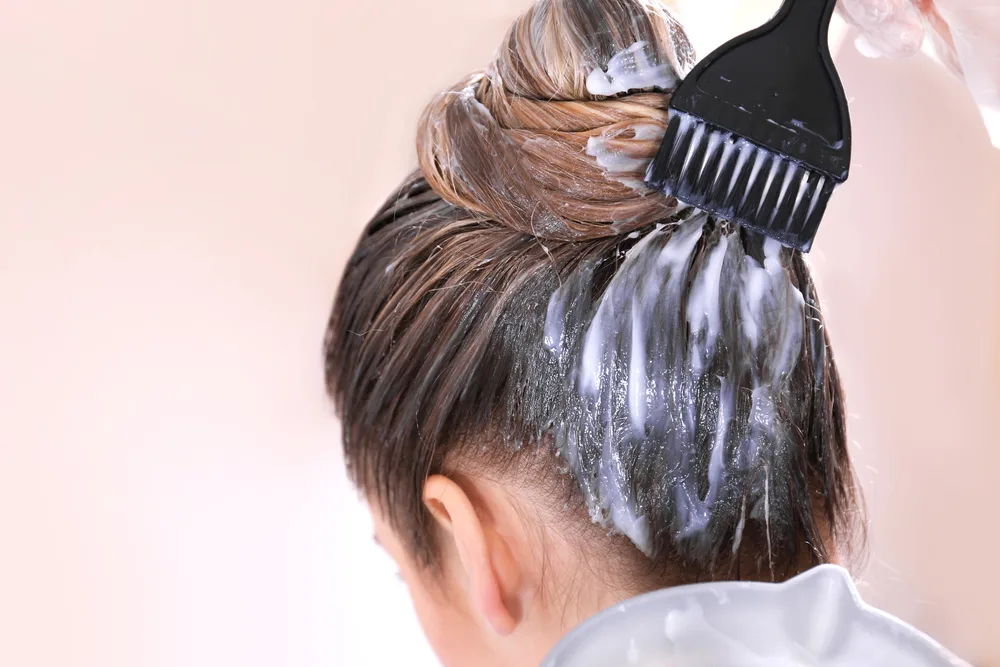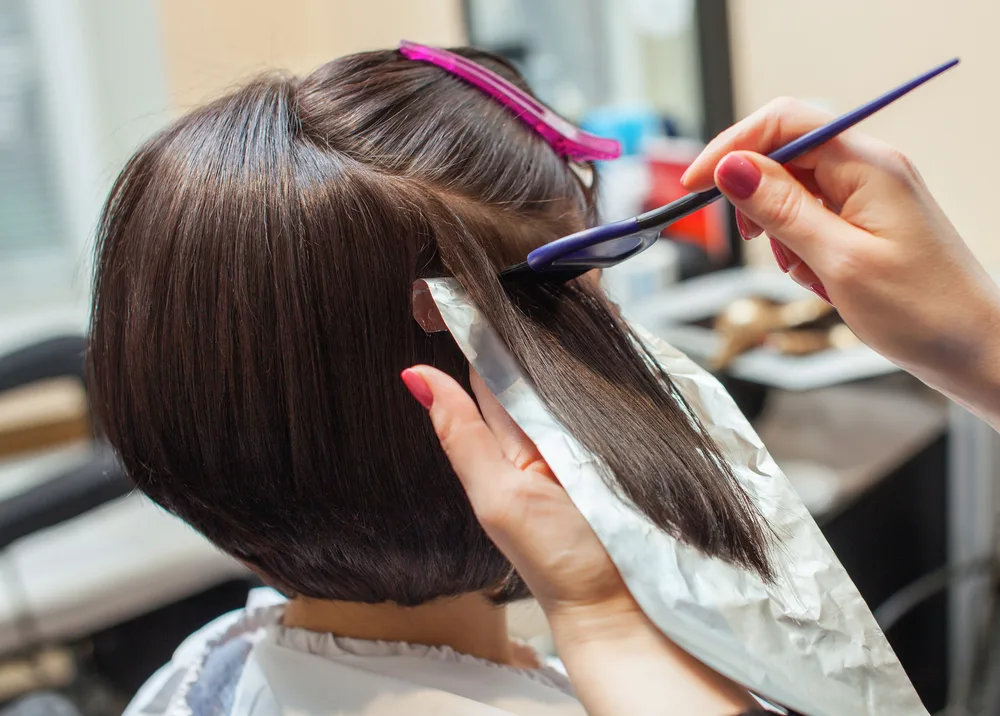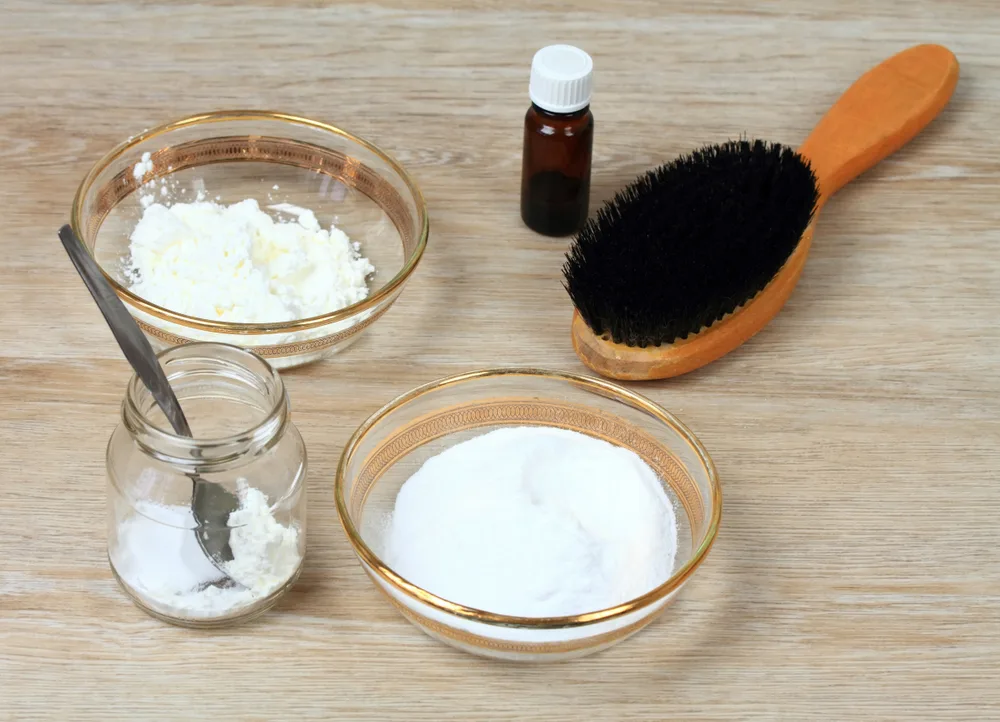Jump to:
Do you want to take your dark locks to a lighter color? If so, it is critical to understand the 7 stages of lightening dark hair.
The Stages of Lightening Dark Hair
There are 7 stages of lightening dark hair. Most people start at black or dark brown (stage one), and you may end up anywhere from medium to light blonde (stages 5 and 6).
Some people want to go all-in to the end of the spectrum and rock icy platinum blonde hair. Before you proceed, you should know that lightening dark hair is not for the faint of heart. It requires time, patience, and (in most cases) know-how.
And in our opinion, it is vital to know what you are getting into ahead of time. To help you make a sound decision about whether or not to go light, we will cover everything you need to know.
This article will discuss:
- Things to keep in mind before committing to light hair
- What kinds of lighting tools are available, both natural and chemical
- What to expect in each of the 7 stages
- Some frequently asked questions
Without further ado, let’s jump in.
Should You Lighten Dark Hair?

Africa Studio/Shutterstock
First things first: here are a few things to keep in mind before you head to your stylist or attempt to lighten your dark hair at home.
Patience Is Required
Because damaging chemicals are required, the process must be gradual. Don’t expect to go from black to platinum blonde in one sitting — or even 2 or 3. Lightening dark hair is tricky, and getting the right color requires lots of patience and know-how.
Eumelanin vs. Pheomelanin
The reason that darker tones are harder to lighten has to do with the kind of melanin present in dark hair. You probably already know that melanin is what is responsible for our skin and hair color.
But maybe you didn’t know that there are two types: eumelanin and pheomelanin. The more eumelanin present in your skin, the darker your skin (and hair). On the other hand, if you make more pheomelanin, you probably have fair skin and freckles.
Unfortunately for individuals with lots of eumelanin, this hair type is often more resistant to change. It typically takes longer for coloring products to penetrate, as there is a higher concentration of melanins to get through.
Virgin Hair Is Best
Another thing to keep in mind is that you may need to “prepare” your hair before going light. The lightening process works best on unprocessed hair.
That is, on virgin locks. Hair professionals generally suggest stopping processing treatments about 3 months before you plan to lighten your hair.
You Might Also Like:
The 3 Main Hair Lightening Tools
It’s also vital to understand the lightening tools available. Colorists use one or a combination of 3 methods.
- Lightening. Lightening refers to the process of artificially reducing and dissolving the pigment in the hair. You can only use lightening on virgin hair.
- Bleaching. Bleach is an incredibly powerful way to lighten dark hair. This chemical strips color and brightness, but it also removes moisture. For this reason, bleached hair is often dry and brittle. But if you’re looking for the most effective way to go from dark or black hair to blonde hair, bleach is the best choice.
- Coloring. Coloring (or hair dye) is much gentler than bleach, though it may also cause dry and brittle locks. However, you’ll typically need a combination of dye and bleach to get the results you want because dyes are less effective than bleach. Most dyes will only lighten your hair by about 2 or 3 shades.
The 7 Stages of Lightening Dark Hair

dimid_86/Shutterstock
Now let’s talk about what to expect from each stage of lightening dark hair. The first thing to know is that there’s a bit of debate about the number of stages. Some people argue that there are 7 stages, while others say that 10 is a more realistic number.
We’ll be focusing on 7 stages to keep things simple. Stage 1 is jet black hair, while stage 7 is icy, platinum blonde. As the numbers increase, so too does lightness. Here’s a closer look at each one.
1. Black or Dark Brown
Black or dark brown is stage one, and for many people, it’s where they’ll begin their hair coloring journey. It’s pretty easy to identify if you have stage one hair, as you won’t be able to see any traces of brown.
The products you’ll choose if this is your starting point vary. If you’re using semi-permanent dyes, it’s almost a guarantee that you’ll need to bleach as well. However, some permanent dyes are effective on super dark hair.
2. Dark Brown
If we’re looking at the color scale, dark brown would be around level four. A single round of bleaching should get you to dark brown. You can do this in a salon or at home using powder bleach and a 20-volume developer. Once treatment is finished, no dark pigments should remain in your hair.
3. Light Brown
The third stage is light brown, and it comprises colors that fall on levels five or six. Undertones are usually red or brown, so blending with other colors could be tricky. Most experts would recommend using a high-volume developer here, around 30 or 40.
Light brown is an interesting stage for two reasons. For one, it’s the most common color of natural hair. Additionally, many initial treatments on stage one hair will end up at a light brown.
4. Dark Blonde
Stage four is a dark blonde color. You may hear it referred to as dirty blonde, but dark blonde is a more accurate term. It can be a somewhat in-between color, as many individuals can’t discern between light brown and dark blonde.
However, there is a subtle difference. Dark blonde hair contains yellow pigments, whereas light brown hair does not. Instead, the undertones in light brown hair are redder. With the correct lighting, you should be able to observe these differences.
5. Medium Blonde
Medium blonde and dark blonde are also easily confused, though medium blonde is stage five. If we look at the color scale, medium blonde is around level eight. This point is also where true blonde tones begin, as practically any other shade will show through this color.
Again, yellow pigments are the distinguishing factor for medium blondes. They’re lighter than in dark blondes. And at this stage, we’ve reached a color that can be quite tricky to get right. Many people turn to their hairstylists to ensure the right tone.
6. Light Blonde
Light blonde is considered stage six, and it’s where things start getting tricky. At a nine on the color scale level, light blonde is nearly at the end of the spectrum. For this reason, it’s difficult to achieve on your own.
If you’re trying to attain a light blonde color at home, you should be aware of the risks. Damage is all but assured if you aren’t sure of what you’re doing, with things ranging from dryness and breakage to even hair loss.
7. Platinum/Icy Blonde/White
At the very end of the spectrum, we can find icy or platinum blonde tones. It looks stunning on the right skin tone, but it’s not for everyone.
A word of caution for anyone hoping to get to this stage is that it is highly challenging to do without damaging your hair. You’ll need to take excellent care of your locks, and it’s best to leave this final transition in the hands of a professional.
Natural Ways to Lighten the Hair

Iva/Shutterstock
If bleach and hair dye sounds like too much for you, you can also employ some methods of lightening your hair without bleach. The good news? You probably already have these products on hand, and they’re much more affordable than other treatments.
The downside is that you won’t be able to achieve such drastic results as you would with bleach and dyes. They’re also somewhat less predictable, so proceed with caution.
Baking Soda & Peroxide
The most classic at-home method of lightening your hair is using a baking soda and peroxide mixture. Regular bleaching requires you to add a developer to the bleach, and these two ingredients act as such.
The baking soda is the “bleach,” and the peroxide is the “developer.” To lighten your hair this way, you can create a paste by mixing:
- Two teaspoons of baking soda
- 1 ½ teaspoon of hydrogen peroxide
Spread the paste evenly on your hair, leaving it in for about thirty minutes. Using this method, you may be able to go from stage one to stage six in just a few sessions. However, keep in mind that it has a similar drying effect to bleach.
You can also use baking soda by itself to lighten color-treated hair. Baking soda is a scrubbing agent and will gradually strip dye from the hair, making it an effective at-home treatment.
Apple Cider Vinegar
Apple cider vinegar is another natural way to achieve lighter locks. You’ll need to dilute it with water first, creating about a 1:6 ratio of apple cider vinegar to the water.
Apply the mixture to your hair, and let it sit for fifteen to twenty minutes. Over a few sessions, you should be able to lighten 3 to 5 stages.
Frequently Asked Questions
Here are some of the most common questions regarding lightening dark hair.
How many stages can you lighten in one session?
If you’re bleaching, most experts would recommend not going more than four levels in one session. After two or three weeks, you can do more.
How damaging is lightening your hair?
It depends on the method you use. Of the three, bleach is the most damaging. Bleach raises the outer cuticle and damages the bonds in the hair.
Is lightening your hair the same as bleaching it?
Lightening and bleaching are two separate processes. The former is used for lightening natural hair. The latter is used to lighten hair that’s already been colored.
How long do you need to leave the bleach on your hair to color it?
It varies according to your hair color and texture. Fine, blonde hair requires shorter treatments between ten to twenty minutes, while you should leave the bleach on darker hair for up to half an hour.
How many sessions does it take to go from brown to blonde?
It depends. Expect at least three to four sessions to take you safely from brown to blonde.
So, What Are the Stages of Lightening Dark Hair?
Now you know that the stages of lightening dark hair range from black to light or icy blonde. Being aware of what happens in each one is the best way to get the right color for you.
And remember, when it comes to making this transition patience and tenderness are critical. With that said, you know your hair is a blank canvas. So what are you waiting for — head to the salon today!
